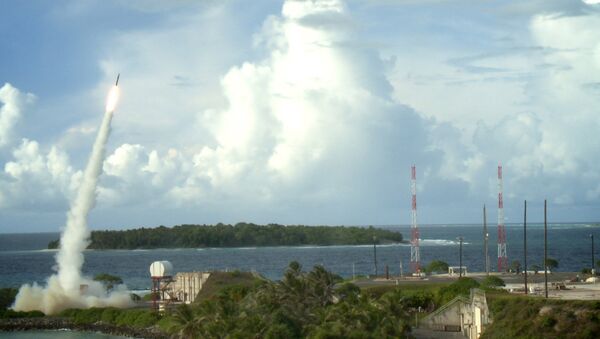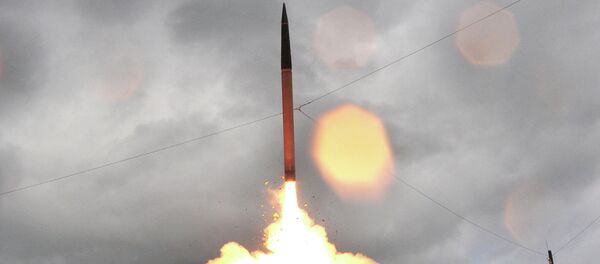While the US missile defense systems are placed on land, Russia, unlike China, was almost not affected. However, the deployment of an extension of the system to waterfront as warships with THAAD missile defense, could now perhaps, represent a threat to the Russian Strategic Missile Forces.
Russian military expert Vladimir Yevseyev spoke to Sputnik about this possible threat.
“On the American cruisers and destroyers with guided missiles two vertical launch M-41s are installed. As a rule, they can fire up to 80 rockets. However, most of these missiles are only surface-to-air missiles. Since their main purpose is to support the aircraft carrier group. That is, they are required to ensure air defense of the aircraft carrier group,” Yevseyev said.
The expert further said that for the cruiser or destroyer to carry offensive potential they are installed with sea-launch cruise missiles such as Tomahawk cruise missiles. However, the Aegis missile weapon control system is mainly designed to intercept missiles at the start of an active phase.
Nevertheless, even for that to happen the submarine needs to quickly arrive close to the submarine which is again a distance of thousand kilometers, so that is also quite unlikely. Therefore, this threat is quite hypothetical, according to Yevseyev.
Some experts believe that to ensure the efficiency of the US missile defense system, one must have robust satellite constellation, but according to Yevseyev, this is not the case here.
“The satellite constellation, indeed, can give the relative success in intercepting warheads of intercontinental ballistic missiles. But we must understand that as soon as warheads are released, they are reliably covered with anti-missile defense complex, hence, the satellite constellation will have a very low efficiency of combat capacity,” the expert noted.
Furthermore, it is important to keep in mind that the information that comes from satellite constellations, in any case, must always be confirmed by at least one or two satellites, the expert noted.
“Russia today is sufficiently using Voronezh-M type radar station, which allows information on intercontinental ballistic missiles, warheads and the direction of their movement to be received,” the expert concluded.




